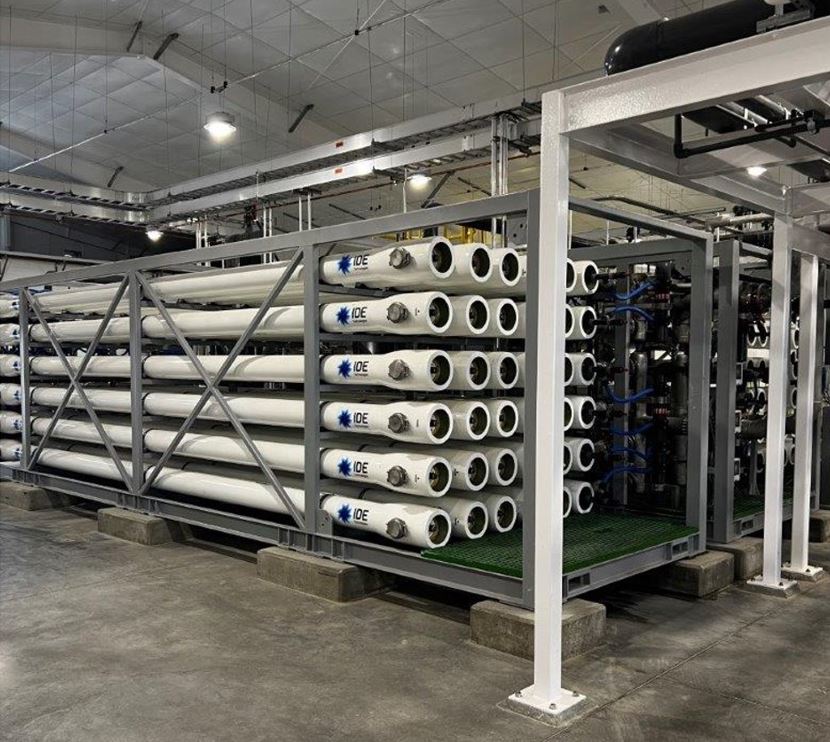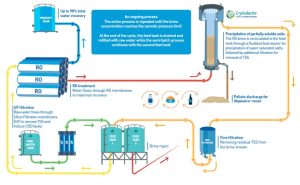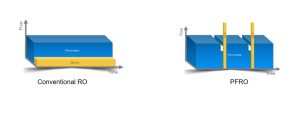How IDE’s High-Recovery Technologies Transform Cost, Compliance, and Sustainability .
Closing the Loop: High-Recovery RO and ZLD for a Sustainable Water Future

Across industries, the move toward sustainability is no longer optional — it’s essential.
Water, the foundation of industrial activity, is under unprecedented pressure. As freshwater sources dwindle and environmental regulations tighten, the vision of a waste-free, circular water economy is quickly becoming an operational priority.
That vision is now attainable through High-Recovery Reverse Osmosis (RO) and Zero Liquid Discharge (ZLD) technologies — innovations that transform wastewater from an environmental challenge into a reusable resource.
From Waste to Resource: The Role of ZLD and MLD
A true ZLD system ensures that no liquid waste leaves the plant — only purified water and minimal solid residue. But achieving this goal requires a practical bridge: Minimum Liquid Discharge (MLD).
MLD systems significantly reduce brine volume before the thermal stage, lowering both energy consumption and operational costs, and making ZLD viable at industrial scale.
Traditional RO systems typically recover only 50–80% of feedwater, leaving a concentrated brine stream rich in salts, organics, and metals. Without advanced treatment, this stream is often discharged, harming soil and groundwater.
To close the loop, industries need reliable, high-recovery RO systems capable of treating complex wastewater efficiently — and that’s where IDE’s innovation makes the difference.
The Challenge of High Recovery
Increasing water recovery rates introduces several engineering challenges:
- Scaling and Fouling: Higher concentrations of dissolved solids lead to mineral and biological buildup.
- Rising Osmotic Pressure: Increased pressure raises energy demands and membrane stress.
- Operational Stability: Even minor performance fluctuations can impact production.
- Chemical and Energy Costs: Aggressive recovery targets can drive up OPEX without the right controls.
Reaching ultra-high recovery requires not just stronger membranes, but smarter process design — and IDE has developed a breakthrough solution to make it possible.
The MAXH2O Technology Platform
IDE Technologies’ MAXH2O platform is a suite of proprietary membrane-based technologies designed to push water recovery to its practical limit — safely, efficiently, and sustainably.
The platform includes two key innovations:
- MAXH2O Desalter
- MAXH2O Pulse Flow RO (PFRO)
Together, they deliver exceptional recovery, reliability, and cost efficiency for industrial reuse and ZLD applications.
MAXH2O Desalter: Beating Scaling at Its Own Game
The MAXH2O Desalter achieves recovery rates of up to 98%, tackling scaling at the source.
Instead of allowing salts to accumulate on membrane surfaces, the system continuously precipitates sparingly soluble salts in a fluidized bed reactor, while recirculating treated water through the RO at high shear velocity.
This unique configuration:
- Prevents scaling and salt buildup
- Reduces biofouling due to dynamic flow conditions
- Accommodates variable feedwater quality
- Lowers CAPEX and OPEX compared to conventional high-recovery RO

The MAXH2O Desalter is particularly effective for industrial effluents, cooling tower blowdown, and other brine minimization processes — enabling industries to meet strict environmental regulations while reducing water costs.
MAXH2O PFRO: Pulse Flow for Smarter Recovery
Conventional RO systems operate under steady-state conditions, which are ideal for fouling and scaling.
IDE’s Pulse Flow Reverse Osmosis (PFRO) technology changes that paradigm with a controlled cyclic operation that alternates between production and flushing phases:
- In Production Mode, the system maximizes water recovery.
- In Flushing Mode, brief, high-velocity pulses scour membranes, removing deposits before they form.
This dynamic process continuously alters osmotic and hydraulic conditions — preventing the formation of stable fouling layers and biofilms.
The result:
- Up to 4× higher shear velocity than conventional RO
- Significantly reduced fouling and scaling
- Extended membrane life and consistent high recovery
- Lower chemical use, maintenance, and energy demand

Rethinking ZLD: The IDE Approach
Traditional ZLD systems rely heavily on thermal evaporation and crystallization — effective, but energy-intensive and costly.
IDE has redefined ZLD design by integrating advanced MAXH2O membrane recovery with targeted thermal polishing.
This hybrid approach dramatically reduces the brine volume that requires evaporation, lowering both energy consumption and environmental footprint.
Key elements of IDE’s ZLD strategy:
- High-efficiency pretreatment and ultra-high recovery membranes.
- Thermal stages applied only to the final, minimal brine stream.
- Reduced total energy demand and carbon footprint.
The result is a cost-effective, sustainable, and compliant ZLD system — delivering environmental and economic value in one integrated solution.
A Step Closer to a Waste-Free Future
With the MAXH2O Desalter and MAXH2O PFRO, IDE is helping industries achieve water recoveries once considered out of reach — cutting waste, reducing freshwater demand, and advancing the shift toward true circularity.
By minimizing thermal dependence and optimizing membrane performance, IDE’s technologies enable industries to move from waste treatment to resource recovery — a vital step toward a waste-free, water-secure future.
Contact a water expert today and find out more about how IDE can help you solve your water challenges.
















